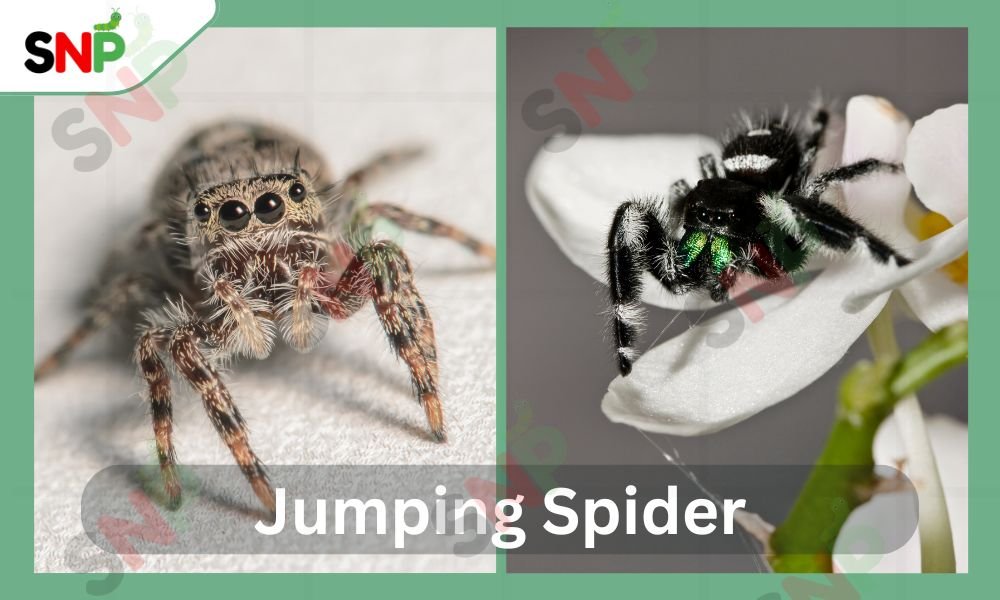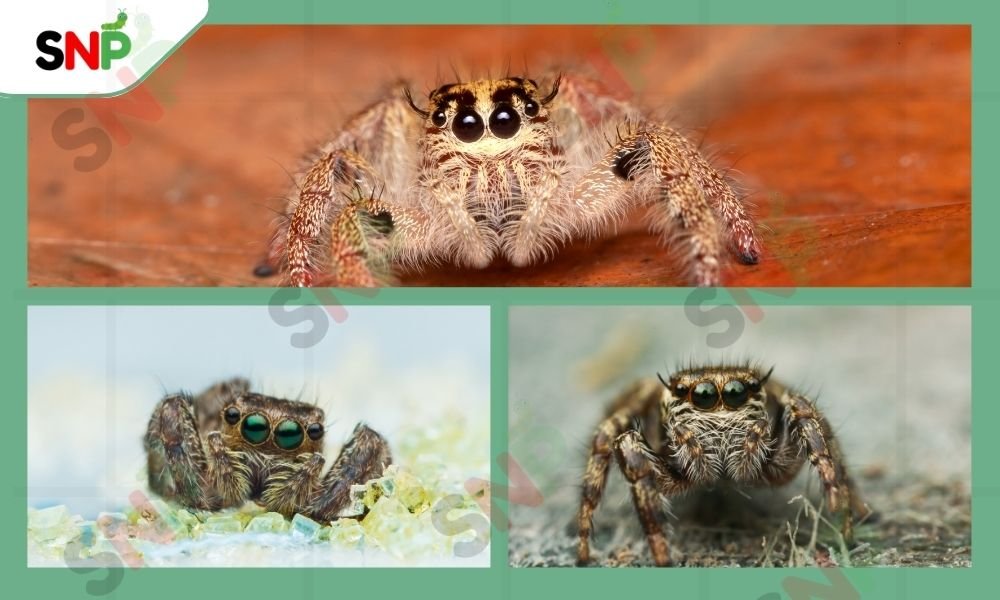Do Jumping Spiders Bite? Unveiling the Truth

Have you ever seen a little jumping spider climbing your windowsill or garden that is fast and has a lot of energy? It is probably a jumping spiders. These arachnids are the most misunderstood yet the most interesting ones. Many people are often searching for an answer to the question of do jumping spiders bite are dangerous or not. It is interesting to know the types of jumping spiders, how to identify them, and, of course, whether they really can be a threat to your home. In this blog, we will help you to clear your doubts with our collected information. Let’s get started.
Types of Jumping Spiders
There are a great many species of jumping spiders in the USA, and each one is recognized by its different colouring and behaviour patterns. Some types of jumping spiders are known to be the best in both urban and rural areas, and many individuals don’t know about the do jumping spiders bite. Have a look below at these types of jumping spiders:
Bold Jumper (Phidippus audax)
This spider has a black body with yellow and red chelicerae and legs that are all black except for the tips of the first and second pairs, which are white. They havewhite dots on its body and their legs are white and black. This one is one of the direct representatives of the families of jumping spiders that you are used to seeing.
Zebra Jumper
This spider species displays distinctive black and white striped markings. Zebra Jumper usually lives in forests with swamps and low-moisture areas, but it also inhabit domestic plants in direct sunlight.
Gray Wall Jumper (Menemerus bivittatus)
These spiders are so good at masking themselves that one easily finds them scampering all through the neighbourhood and but mostly on the walls and fences.
Tan Jumping Spider (Platycryptus undatus)
This spider is usually small and orange with the rest of its body brown to grey. It is mainly found on the low branches of trees. While resting on trees, the reddish spider appears similar to bark or branches because of its transparent colouring.

Red Jumping Spider (Plexippus paykulli)
These spiders gain attention for their impressive orange colouring, which scientists identify as the Red Jumping Spider. Their orange colour stands out as being intense and vivid instead of red. At the same time, their white leg markings combine with this colouration to make them mostly winter residents across temperate regions.
Jumping spiders serve two functions because their unique behaviour is at once fascinating to watch, and they act as natural pest controllers through insect consumption.
Jumping Spider Identification
The main question is, how do you tell that the spider in your home is a jumping spider? The following is a sure way to distinguish:
Size:
The jumping spider size includes organisms between 1 millimetre and extending to 3/4-inch.
Color:
Most jumping spiders show different colours, including black and brown together with tan and grey shades, alongside iridescent patterns that may produce bright markings. The primary feature creating the resemblance between the zebra jumper and a zebra stems from its striped appearance. In contrast, the bold jumper exhibits wider spots with gradient colouration rather than distinct colouring.
Appearance:
The main characteristic is the arrangement of their eyes. Jumping spiders have many eyes, and they are a big, front-facing central pair that gives them best vision. Their bodies are short and can be bright or iridescent, with lots of hair or scales.
Behavior:
Jumping spiders are similar to their name, which is agile, and they use their strong legs to jump several times longer than their body length. They also do not produce webs for catching food, but they extend their arms and grab them around the corner like tiny little hunters. You can often find them moving around sunny areas, window sills, gardens, and even indoors near doors and windows. So if you are wondering about the do jumping spiders bite then answer would be yes they do.
Do Jumping Spider Bite?
The primary query is: can jumping spider bite a human? The answer is in the affirmative, but at a big ‘however’.
Jumping spiders rarely bite:
They are peaceful insects, and only when they are cornered, threatened, or if they are accidentally pressed against our skin will they bite us. In most situations, their primary reaction is to jump away instead of attacking.
What does a jumping spider bite feel like?
The symptoms from jumping spider bites normally present minimally. Between mild symptoms like skin redness and swelling and localized itching exists a rising section on skin of a firm raised bump which resembles a mosquito bite. The pain is usually lighter than that of a bee sting, and most of the time, you will not have any feeling at all.
Are jumping spider bites dangerous?
For human bodies, a jumping spider bite is not risky. Their venom meant to paralyze small insects, rather than humans, and the so-called venom not identified to be any kind of threat from a medical point of view. A doctor Should consulted immediately by individuals with significant edema or trouble breathing, or other severe allergic reaction indicators.
How to treat a jumping spider bite?
If you feel you bitten, then, first of all, clean the area of the bite with water and soap, apply a cold pack to lower the swelling, and think about taking an over-the-counter painkiller or antihistamine to relieve the itchiness.

Why Do You Get Afraid of Jumping Spider Bites, and Is It True?
In short, the answer to do jumping spiders bite are dangerous is basically no, and though on a rare occasion, you bitten, then it could be almost harmless. The increased population of pests in your garden or your house could be even the result of a good thing, as long as you are in their support with your utmost effort. Professional pest control services offer expert advice about your situation while removing spiders from your living environment for those who want to eliminate all spider presence.
Your knowledge about different jumping spider bites, types, along with identification methods and actual danger levels of their bites, allows you to observe these creatures while safeguarding your house from external weather elements and feeling secure in it.
Related Posts
Giant House Spiders: What are they & How to Deal
One of the most prevalent observed arachnids in American households is the giant house spider, especially in the western region of the nation (the Pacific Northwest). Although it may seem that they are ferocious animals of a great size and authoritative look, these fascinating creatures may be harmless to people and may even be profitable […]
Spider Webs: A Comprehensive Guide to Nature’s Engineering
Among the most interesting and elaborate creations of nature, there are spider webs. Not only can spiders use these fantastic designs to house and protect themselves, but all kinds of purposes, including catching prey. Awareness about the spider webs will enable American homeowners to understand the value of these natural pest predators as well as […]
Spider Baby: A Deep Dive into America’s Most Common Spiderlings
Dealing with pest control in the United States pivots on the idea that dealing with spider baby and their in the life cycle of the former is significantly effective in managing the latter (through home management). These minute arachnids, also referred to as the spiderlings, are the new nature pest controllers. What you need to […]
Quick Link
Services
